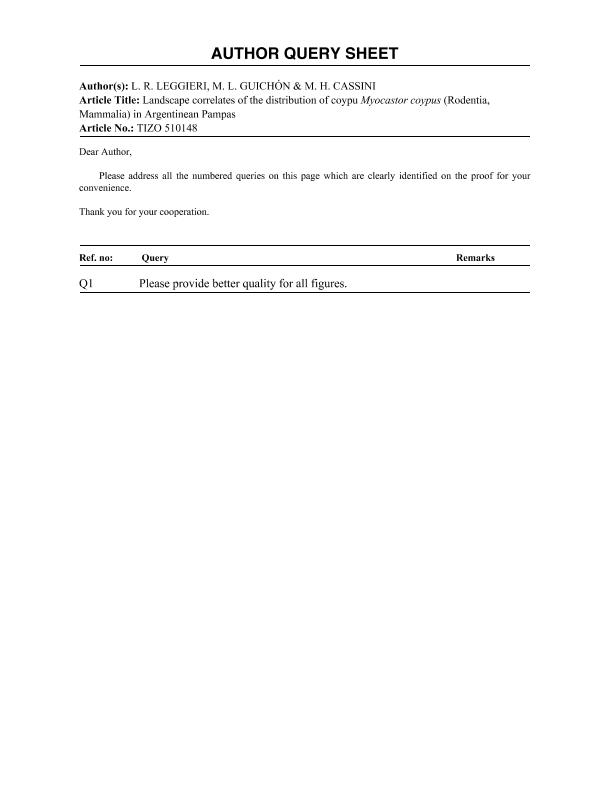Artículo
Distribution of coypu (Myocastor coypus) in Argentinean Pampas: landscape correlates and integration with smaller ecological scales
Fecha de publicación:
07/03/2011
Editorial:
Taylor & Francis Ltd
Revista:
Italian Journal Of Zoology
ISSN:
1125-0003
e-ISSN:
1748-5851
Idioma:
Inglés
Tipo de recurso:
Artículo publicado
Clasificación temática:
Resumen
The coypu is a rodent indigenous to aquatic habitats in southern South America, which is considered a pest where it has been introduced and a valuable furbearer resource within its native range. The objective of this study was to identify the main landscape correlates of coypu distribution in the Pampas. Previous studies provided two non-exclusive hypotheses: (1) if hunting pressure regulates coypu distribution, then coypu presence should decrease in areas with high human density, while (2) if resource availability determines coypu landscape patterns, then coypu presence should be high in flooded areas with low human management of plant communities, that is natural grasslands used for extensive cattle raising. We sampled signs of coypu activity and 11 associated environmental variables in 87 600-m transects distributed in 14 rivers and streams of the Pampas region. The first factor of the principal component analysis (PCA) was associated with the wide of the alluvial plain and the agricultural use of land, the second one with human density in the surrounding area. We applied a multiple linear model between the first three factors of the PCA and the proportion of positive transects per watercourse. Our results indicated that coypus are less frequently found in urban and semi-urban landscapes. We postulate that hunting pressure is the main cause of this negative association, which is consistent with previous studies conducted at smaller ecological scales.
Palabras clave:
Hunting Effect
,
Landscape Features L
,
Spatial Scales
,
Species Distribution
Archivos asociados
Licencia
Identificadores
Colecciones
Articulos(IBYME)
Articulos de INST.DE BIOLOGIA Y MEDICINA EXPERIMENTAL (I)
Articulos de INST.DE BIOLOGIA Y MEDICINA EXPERIMENTAL (I)
Citación
Leggieri, Leonardo Ramón; Guichón, M. L.; Cassini, Marcelo Hernan; Distribution of coypu (Myocastor coypus) in Argentinean Pampas: landscape correlates and integration with smaller ecological scales; Taylor & Francis Ltd; Italian Journal Of Zoology; 78; 1; 7-3-2011; 124-129
Compartir
Altmétricas




